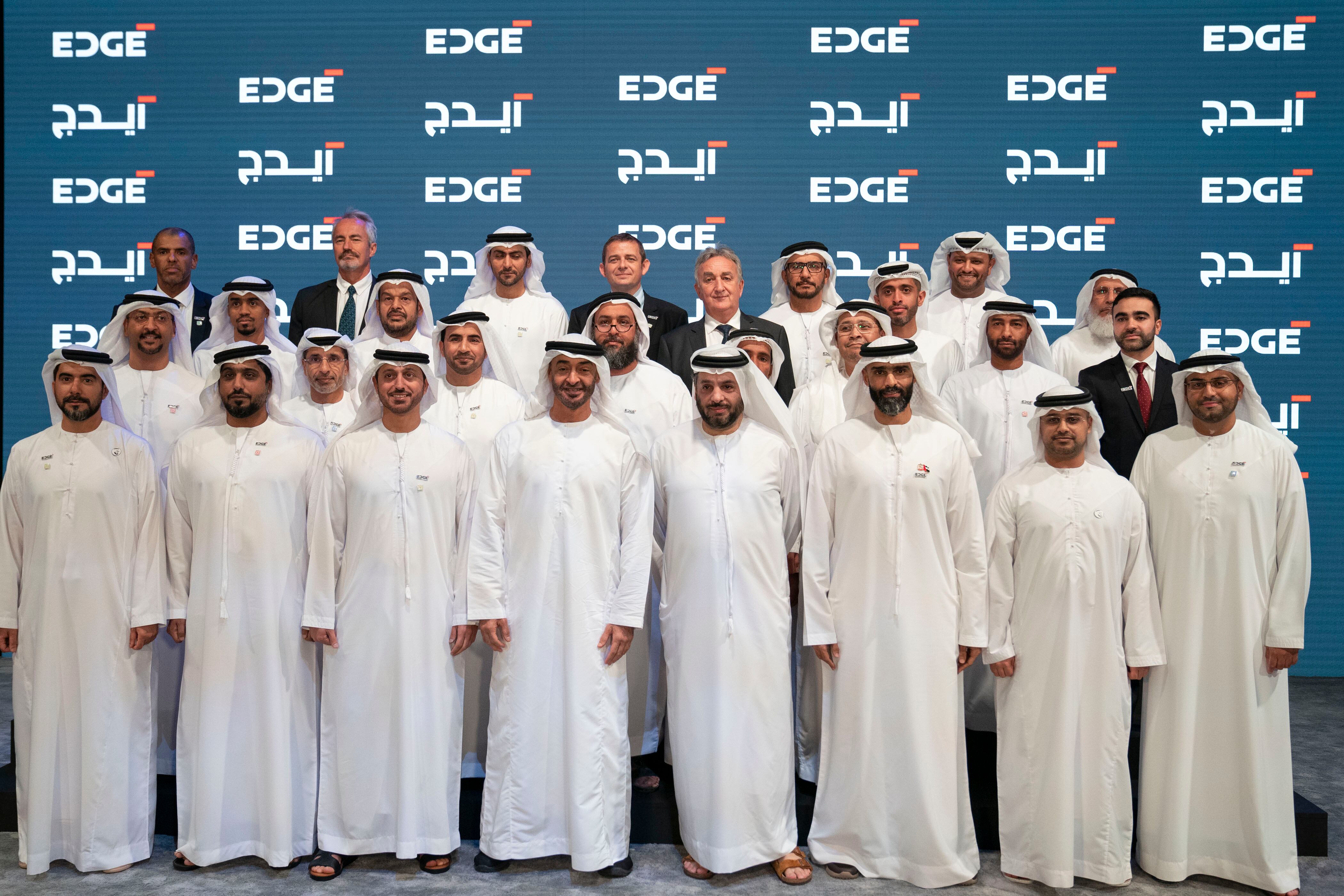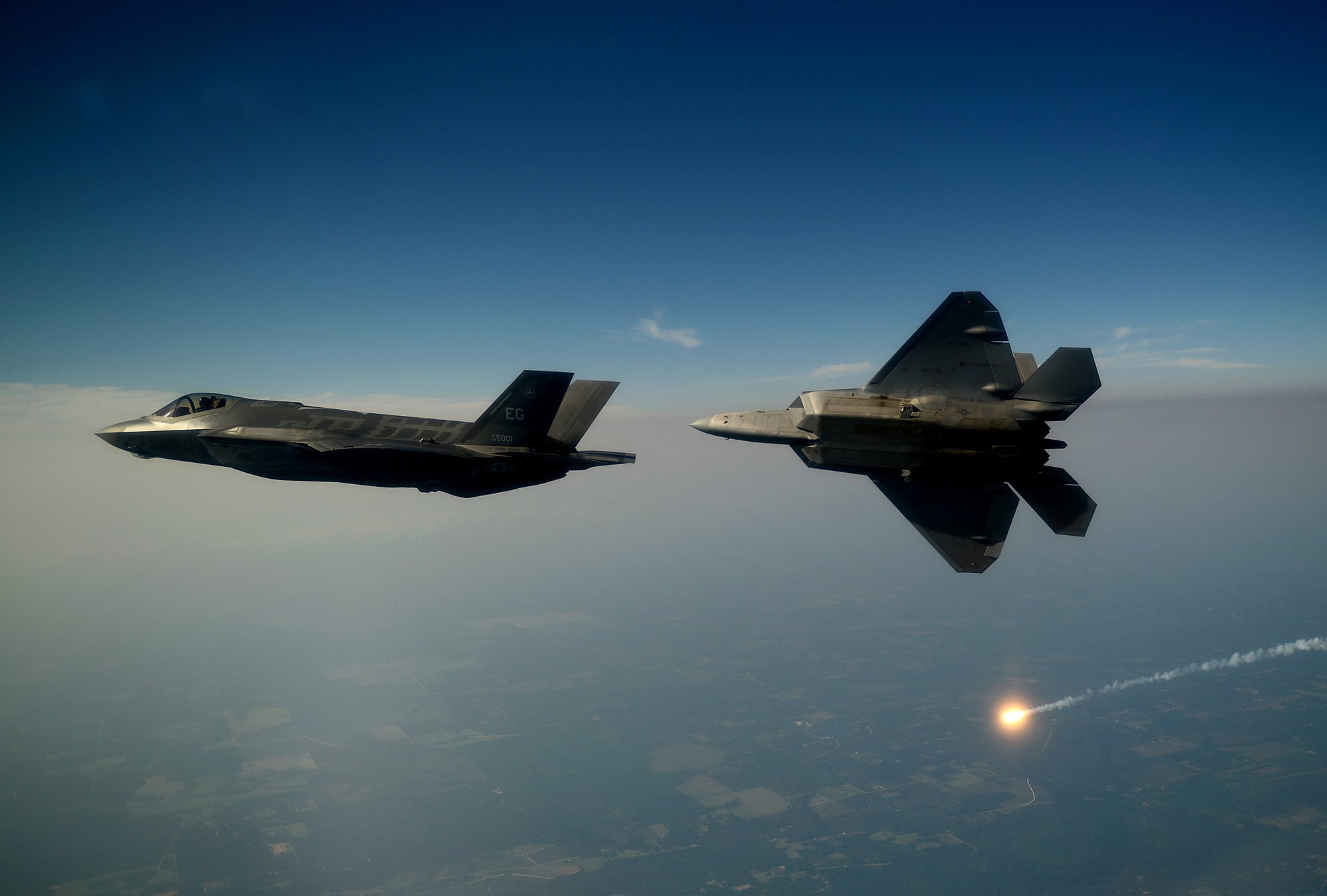DUBAI, United Arab Emirates — The U.S. Air Force’s top general on Saturday made a plea for Arab nations to overcome political differences and collaborate on defense technologies that would enable them to thwart a potential attack by Iran.
Speaking at a gathering of international air chiefs on Saturday ahead of Dubai Airshow, Gen. Dave Goldfein called on Gulf countries to develop a “common operational picture” that would allow them to collectively defend against Iranian aggression. Doing so, he said, would require leaders to resolve regional conflicts that have prevented such collaboration.
Click here for more from the 2019 Dubai Airshow.
"Here in the Gulf as we face a common adversary that seems committed to malign behavior across the region,” he said. “The reaction time for an Iranian ballistic missile attack to the northern most point in the Arabian Gulf is single digit minutes. And no one country has everything you need to defend itself,” he said.
RELATED

“When a missile or a UAV is in route from Iran, can we agree that is not the time to start reconciling past grievances. That time is now, today,” he added.
Although Goldfein did not specify, his comments likely reflect the U.S. government’s desire to see an end to a dispute between Qatar and a Saudi Arabia-led bloc of countries including the United Arab Emirates, Bahrain and Egypt. Those nations cut off diplomatic ties with Qatar in 2017, citing Qatar’s alleged support for terrorist organizations.
U.S. leaders, however, have maintained that Iran remains the biggest threat in the Middle East and that the ongoing dispute detracts from efforts to counter Iran — a sentiment repeated by Goldfein during the conference.
“Together we have exactly what we need for collective defense,” he said, adding that, in some situations, it may be more effective for Gulf nations to rely on their neighbors for support in areas such as intelligence, surveillance and reconnaissance or missile defense. For example, if the UAE were under attack, it may be more difficult for the UAE to intercept a missile than other Gulf countries that may be better positioned, geographically, to target and shoot down that weapon.
“In the business of layered missile defense, the most difficult shot to take when you are trying to hit a speeding bullet with a speeding bullet is nose to nose,” Goldfein said. “Said another way, the best shot to defend the UAE is not always from the UAE. It may be from Qatar or Oman, neighbors to the right and to the left, who by geometry alone have a better shot."
During a later speech, Lt. Gen. Joseph Guastella, the commanding general at Air Force Central Command, echoed Goldfein’s calls for increased interoperability.
“We fall short in our defense posture due to capability gaps and the inability to share information,” he said. “A multinational combined defense framework would strengthen the deterrence of this region. We have the opportunity today to firmly integrate our air and missile defense systems, much like our aircraft. Air and missile defense systems must be able to communicate real time across borders and provide the greatest amount of time for decisionmakers to take action.”
While much of the conference focused on how to integrate fourth and fifth generation aircraft — as well as “sixth-generation” fighters like the United Kingdom’s Tempest and the Franco-German Future Combat Air System — U.S. Air Force officials touted the importance of enhanced international cooperation and the need to network existing platforms together so that they could quickly convey important data to operators.
Several months ago, the U.S. military demonstrated a mesh network that could link an unnamed space asset, ISR platform, command-and-control platform and naval destroyer together and use artificial intelligence to automatically pass important data back and forth, Goldfein said.
RELATED

During the exercise, the space asset detected a simulated enemy vessel, but could not identify it or obtain detailed targeting data, so it cued an ISR platform to get close enough to the ship to get that information. The data was then sent to a C2 asset, which used algorithms to select the best platform available to carry out a strike, choosing a nearby U.S. Navy destroyer.
"But here’s the most important part. The first human in that kill chain was the naval destroyer, the shooter with final decision authority to execute the strike based on commander’s intent,” Goldfein told the gathered military officials. “This is no longer power point. It’s real, and my commitment to you is that we will not do this without you.”
Valerie Insinna is Defense News' air warfare reporter. She previously worked the Navy/congressional beats for Defense Daily, which followed almost three years as a staff writer for National Defense Magazine. Prior to that, she worked as an editorial assistant for the Tokyo Shimbun’s Washington bureau.








